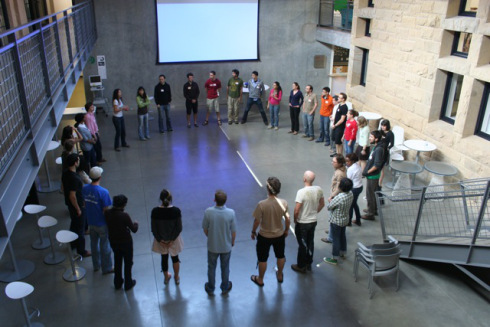Courses & Syllabi
Syllabi may not reflect most recent offering. Current students — please refer to Canvas!
UPPP 8: Environmental Analysis & Design (Syllabus)
UPPP 145: Environmental Governance (Syllabus)
UPPP 214: Quantitative Analysis for Planners (Syllabus)
UPPP 275: Environmental Planning & Management (Syllabus)
UPPP 284: Environmental Theory & Topics (Syllabus)
SE 195: Field Study
Teaching Cases
If you use one of these cases in your classroom, please let Dr. Ulibarri know how it went!
Negotiating Science and Policy in Collaborative Hydropower Licensing
Teaching Simulation, written with Kirk Emerson. Awarded first prize in the Ninth Annual Collaboration Teaching Case and Simulation Competition, E-PARCC Collaborative Governance Initiative. Program for the Advancement of Research on Conflict and Collaboration, Maxwell School of Syracuse University.
This simulation highlights the role of technical and scientific information in environmental negotiations. It uses the Federal Energy Regulatory Commission’s (FERC) integrated process for licensing hydropower facilities to introduce students to multiparty negotiation and collaboration in a complex environmental decision-making setting. Participants learn how to seek their interests through advocating for specific studies that can provide credible information on the impacts of dam operations; how to work with other stakeholders to negotiate the best-informed set of management conditions for the new license using uncertain—but best available—science; and how science and politics interact to influence collaboratively-reached decisions.
Risk Perception and Institutional Complexity in the 2014 West Virginia Chemical Spill
Teaching Case Study, written with Heather Lukacs and Nik Sawe for the National Socio-Environmental Synthesis Center.
On January 9th, 2014, the chemical MCHM (4-Methylcyclohexanemethanol) spilled into West Virginia’s Elk River and contaminated the drinking water of over 300,000 people. In the weeks that followed, the public uncovered a series of institutional failures–among the private sector, local utilities, and government agencies, and both preceding and following the spill. This case study will introduce students to the institutional complexities and ecological vulnerabilities that slowed effective response to the disaster due to an unclear chain of responsibility across sectors. The case also assesses how West Virginia residents and agencies perceived environmental risk severity and the responsibility of different institutional actors, and how these perceptions added to the complexity and uncertainty surrounding response to the spill. This case aims to teach students about different theories of risk perception and environmental governance. It also provides a basic introduction to water quality data, monitoring, drinking water systems, and source water protection.
